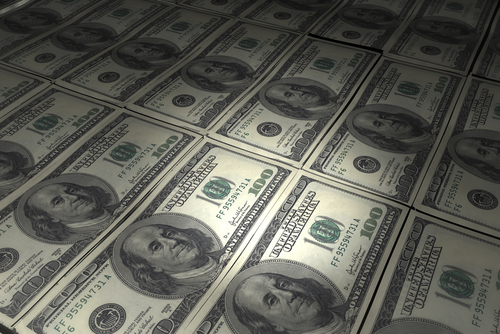Argentina's "Dólar Blues"
“Six forty-five? Ok, that sounds good.”
“No, he said six eighty-five.”
“Six eighty-five? Seriously? Wow…that happened quickly.”
Had you been standing in the currency exchange joint across the street from your editor’s place of work yesterday around, (…say…) 1pm, you might have caught ear of the conversational snippet, above. It occurred between a couple of turistas permanentes who had ventured off the beaten track in search of a more favorable exchange rate for their US dollars.
The official, en blanco, rate of exchange is 4.94 pesos per greenback. But nobody believes this baloney. Neither buyer nor seller. Not for a second. Dollars are a hot commodity here in Latin America’s third-largest economy, thanks to the government’s pathological printing press abuse.
The president of Argentina’s Central Bank (BCRA), Mercedes Marcó del Pont, is an inflationista in every sense of the term. She is a thief, in other words…one who perpetrates a crime against the very poorest people in the country, those least able to absorb the idiocy of her monetary policy into their meagre, defenseless budgets. Marcó del Pont is no common thief, of course…one who politely agrees to take your photo before dashing off with your camera. She is no bag snatcher or pickpocket…but rather a bandit of academic proportions, a grand larcenist who undercuts the value of the nation’s currency by liberally adding to its supply.
“Like her fellow counterfeiters further north,” your editor observed in this space last year, “Argentina’s ‘Fed Head’ maintains a steady program of peso ‘creation’ while bamboozling the population with the kind of nonsensical justifications only a career academic-cum-politician could hope to conjure.”
In a breathtaking denial of the root causes underpinning her nation’s woeful currency history, Marcó del Pont told reporters last year, “It is totally false to say that printing more money generates inflation. Price increases are generated by other phenomena like supply and external sector’s behavior.”
“Phenomena like supply” is correct, we remarked at the time… “specifically the supply of freshly inked fiat notes issuing forth from Marcó del Pont’s printing press.”
How does this work again, Fellow Reckoner? Ah yes…
The favored few at the top, the politically connected who are granted advanced access to the damp-inked dough, are able to benefit by spending it first, by injecting it into the system before it has been devalued. Those who find themselves at the tail end of the queue…the ordinary, working folk trying to make ends meet…it is they who feel the pinch of their government’s “trickle down inflation” policy. These are the poor sods who live paycheck to paycheck, for whom 10% inflation means a tenth less food…a tenth less shelter…a tenth less…everything.
Of course, inflation is not running at a rate of 10% per annum, as the government slyly claims. And here again, nobody believes their demented narrative anyway. Estimates by private consulting firms, like the one against which the government leveled criminal charges last year, put the figure closer to 25-30%. Even this seems low. For those who do have any savings to speak of, they are rapidly dwindling in value.
Unsurprisingly, therefore, local porteños pay a healthy premium to escape their government-tortured pesos, driving the price of foreign currency — the US dollar in particular — higher and higher by the day. The papers here yesterday noted that the spread — la brecha — between the official and unofficial dollar-peso exchange rates had reached a record of 42.7% (from 4.94 pesos to the dollar officially to over 7 pesos per dollar “en blue.”)
It is truly a tale of two parallel, though necessarily-interconnected, markets. One brims with lies and government statistics (but we repeat ourselves), the other is populated by fleeing individuals, desperately responding to injustices foisted on them by their kleptomaniacal leaders. It’s one game for the looters, another for those trying to escape. Or rather, it is two aspects of the same game…opposite sides of a single, increasingly-debased coin.



Comments: